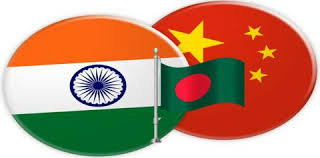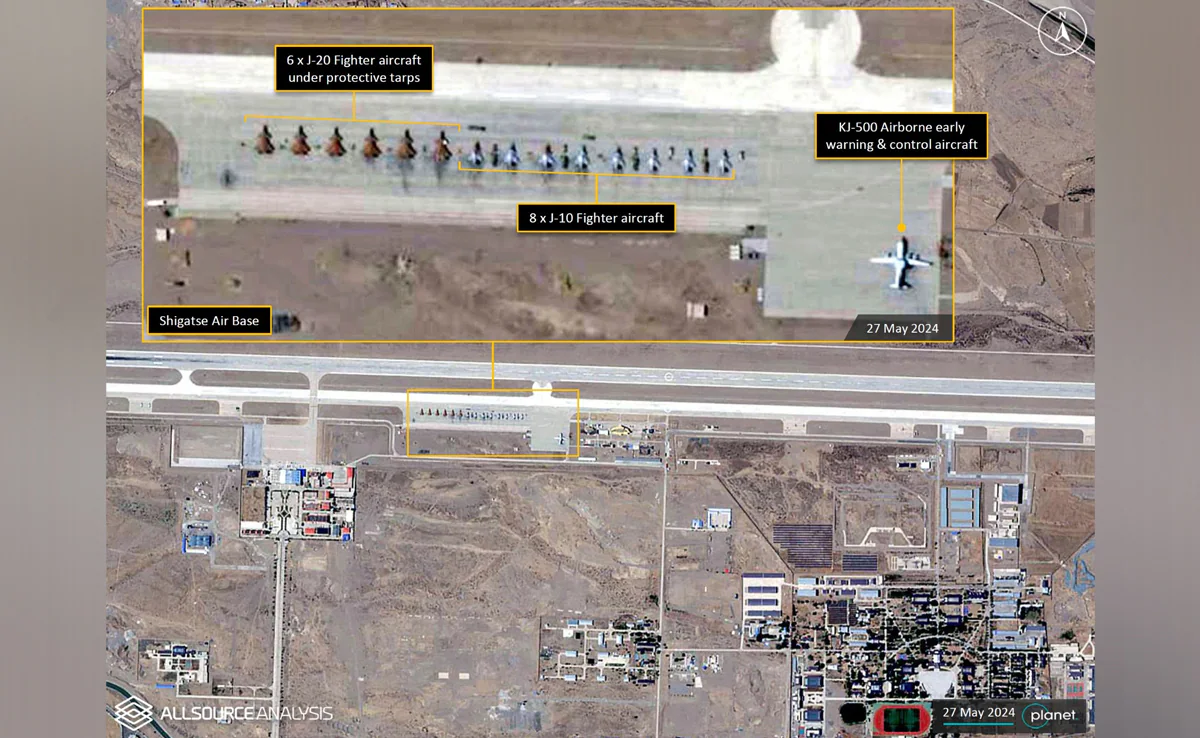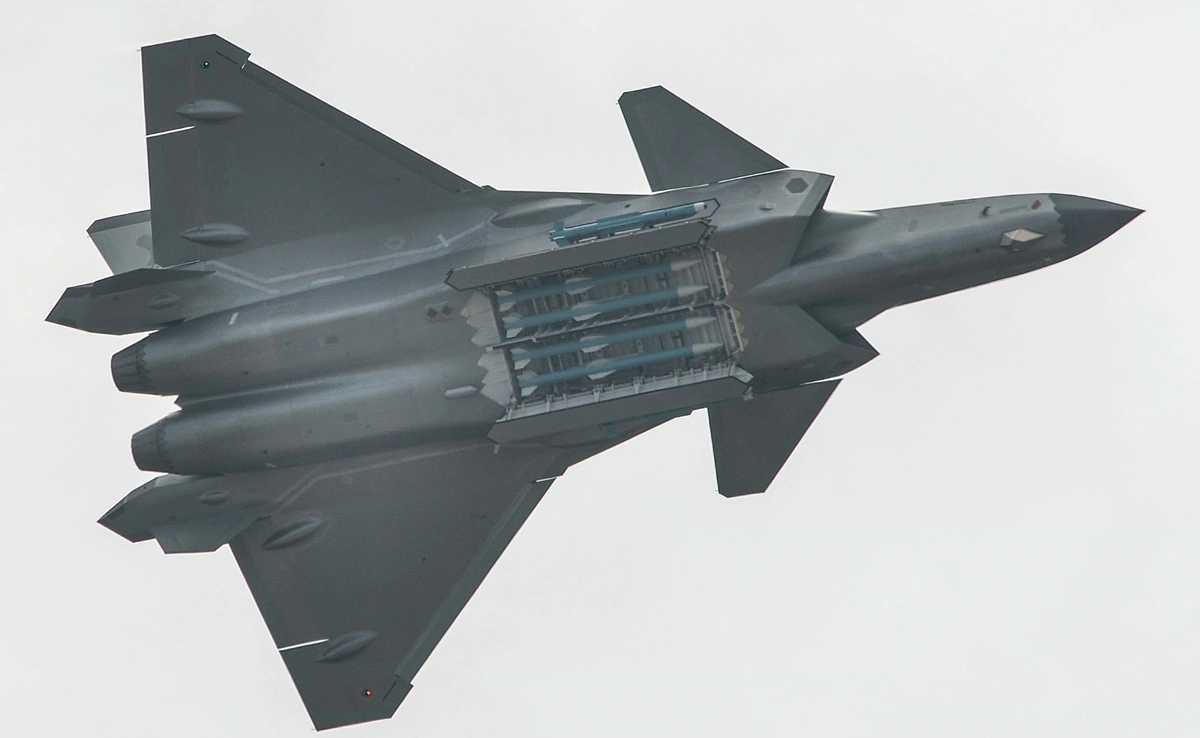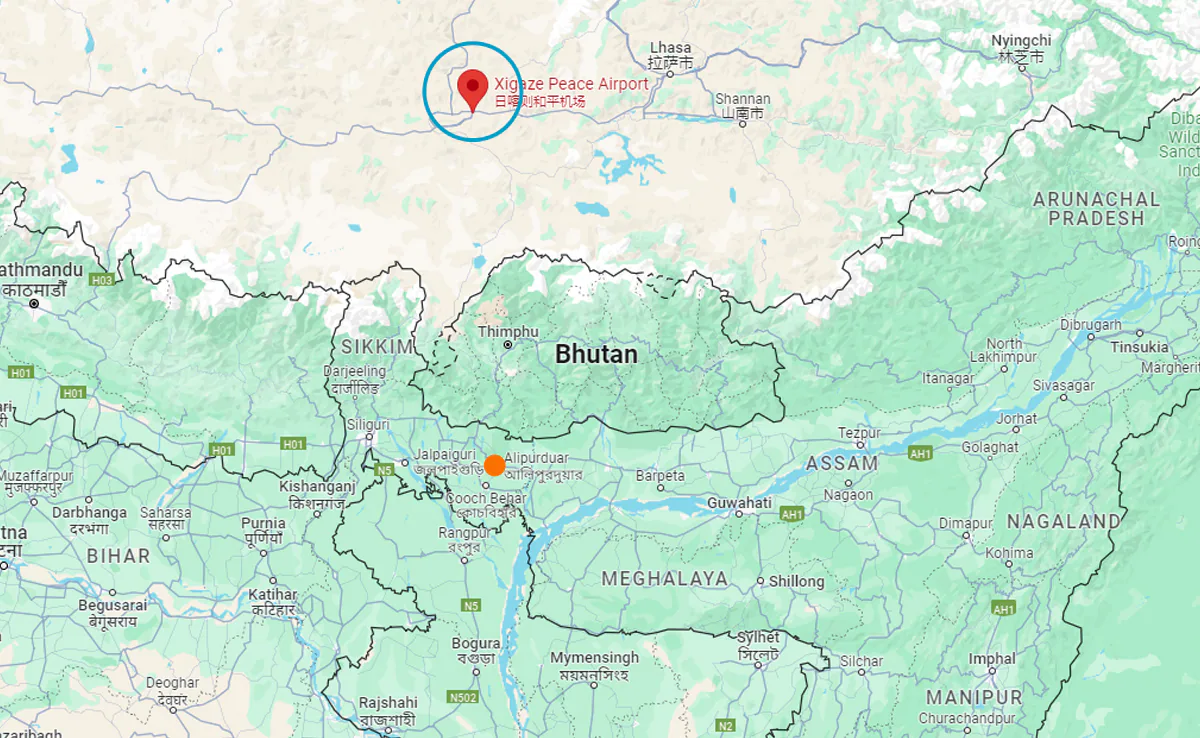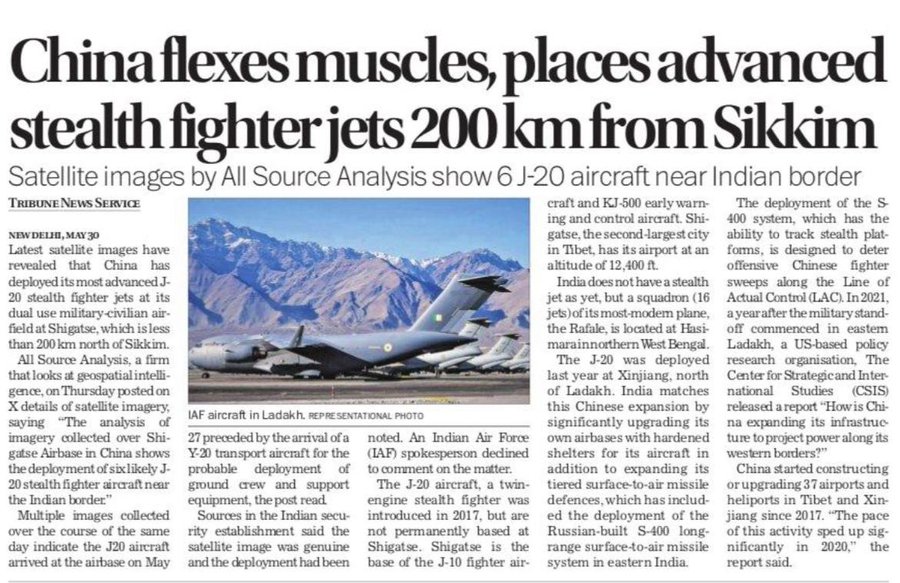My Article published on The EurasianTimes website on 14 Apr 25.
During his four-day visit to China from March 26 to 29, 2025, Muhammad Yunus, the Chief Adviser of Bangladesh’s interim government, made provocative statements against India. Speaking in Beijing, Yunus referred to India’s northeastern states, known as the “Seven Sisters,” as a “landlocked region” with “no way to reach the ocean.” He positioned Bangladesh as this region’s “only guardian of the ocean.” He suggested that this geographical situation presented a “huge possibility” for China to expand its economy through Bangladesh. He proposed that China could “build things, produce things, market things, bring things to China, and distribute them to the rest of the world,” effectively framing Bangladesh as a strategic gateway for Chinese economic influence.
These offensive remarks triggered strong reactions in India. They underscore the “persistent vulnerability narrative” associated with India’s strategic Siliguri Corridor, or “Chicken’s Neck,” a narrow strip connecting the Northeast to the rest of the country. These statements reflect a deeper strategic consideration and longstanding agenda. Yunus’s pitch came during a time of strained India- Bangladesh relations, following the ouster of Sheikh Hasina’s government in August 2024 and his decision to prioritise China over India for his first state visit. His comments were seen as an attempt to leverage Bangladesh’s geographic position to attract Chinese investment. This shift in Dhaka’s alignment toward Beijing potentially complicates regional security dynamics, especially given the Northeast’s proximity to the sensitive Chicken’s Neck corridor. Prime Minister Narendra Modi later cautioned Yunus during a meeting on April 4, 2025, at the BIMSTEC Summit in Thailand, urging him to avoid rhetoric that “vitiates the environment” and emphasising the need for constructive bilateral ties.
Political Upheaval and Anti-India Sentiment. The fall of Sheikh Hasina’s Awami League government marked a turning point in Bangladesh’s domestic and foreign policy. Hasina’s administration had fostered strong ties with India, emphasising economic cooperation, security partnerships, and infrastructure development. However, her ouster, driven by student protests and political unrest, brought to power an interim government that has adopted a less conciliatory tone toward India. Anti-India utterances have gained traction under the new regime. Additionally, public and political discourse in Bangladesh has seen a rise in criticism of India, often centered on issues like water-sharing disputes and perceived interference in Bangladeshi politics. These sentiments are partly rooted in historical grievances and domestic pressures to assert sovereignty but have strained bilateral ties.
Cozying Up to China
Bangladesh’s deepening relationship with China is a significant development under the interim government. Beijing has long sought to expand its influence in South Asia, and Bangladesh’s strategic location makes it a key partner in China’s Belt and Road Initiative (BRI). The Yunus government has actively courted Chinese investment, signaling a shift from Hasina’s cautious balancing act between India and China.
China’s involvement in Bangladesh spans infrastructure, trade, and defence. In March 2025, Dhaka welcomed Chinese participation in multiple projects, including modernising Mongla Port and expanding the China Economic and Industrial Zone in Chattogram. Bilateral agreements signed during Yunus’s visit to Beijing included cooperation in the blue economy, maritime dialogue, and a potential Free Trade Agreement. These moves indicate Bangladesh’s intent to leverage China’s economic might to bolster its development agenda.
However, this pivot toward China has raised eyebrows in New Delhi. India views China’s growing presence in Bangladesh as part of a broader strategy to encircle it through the so-called “String of Pearls” – a network of strategic assets in the Indo-Pacific. The shift is particularly concerning given Bangladesh’s proximity to India’s northeastern region, which is connected to the mainland by the narrow Siliguri Corridor, colloquially known as the “Chicken’s Neck.” The potential threat of China’s growing presence in Bangladesh is a cause for concern in India.
The Teesta River Project: A Geopolitical Flashpoint
The Teesta River, which originates in Sikkim, flows through West Bengal and enters Bangladesh, has long been a point of contention between India and Bangladesh. The river is vital for irrigation and livelihoods in both countries, but disagreements over water sharing have persisted for decades. Bangladesh accuses India of restricting water flow through upstream barrages, particularly during the dry season, affecting millions in its northern districts like Rangpur, Lalmonirhat, and Kurigram.
The Teesta River Comprehensive Management and Restoration Project, estimated at $1 billion, has emerged as a new arena for Sino-Indian rivalry. Under Hasina, Bangladesh had leaned toward India for the project, with New Delhi expressing interest in funding it to counter China’s earlier proposal. However, the interim government has shifted course, inviting Chinese participation. In February 2025, Bangladesh’s Ministry of Environment announced plans to collaborate with China on a master plan for the river’s conservation, involving dredging, embankment construction, and township development. This decision was framed as a response to public demand, with hearings held to build consensus.
For India, Chinese involvement in the Teesta project is alarming. The river’s proximity to the Siliguri Corridor means that Chinese personnel or infrastructure near the border could provide Beijing with strategic leverage. India fears that data on water flow or the presence of Chinese engineers could be used to monitor or influence the region’s security dynamics. The project’s geopolitical implications underscore the delicate balance Bangladesh must strike between economic development and regional stability.
The Lalmonirhat Airfield Project: A Security Concern
Another development raising red flags in India is Bangladesh’s plan to revive the World War II-era airfield in Lalmonirhat, located just 10 kilometers from the Indian border. Reports suggest Dhaka has sought Chinese assistance to transform the abandoned site into a modern airbase, with discussions reportedly held during Yunus’s China visit. While Bangladesh frames the project as part of its military modernisation under the Forces Goal 2030 initiative, India is wary of its potential implications.
The location of the Lalmonirhat airfield, near the Siliguri Corridor, presents a sensitive issue. If developed with Chinese support, the airbase could serve as a dual-use facility, potentially hosting Chinese military assets disguised as civilian infrastructure. The mere prospect of Chinese involvement so close to India’s border is viewed as a provocative move, particularly in light of Bangladesh’s recent overtures to Pakistan, another rival of India.
The Chicken’s Neck: India’s Strategic Redline
The Siliguri Corridor, or Chicken’s Neck, is a narrow strip of land in West Bengal, approximately 20-60 kilometers wide, which connects India’s mainland to its northeastern states. Bordered by Nepal, Bhutan, Bangladesh, and China, it is one of India’s most strategically located regions. The corridor is a lifeline for trade, communication, and military logistics to the northeast. Any disruption in the Chicken’s Neck could isolate the northeast, a scenario India has long sought to prevent. The corridor’s importance has prompted New Delhi to bolster its defences, deploying advanced assets like Rafale fighter jets, BrahMos missiles, and the S-400 air defence system.
Bangladesh’s moves to involve China in projects near the corridor – particularly the Teesta River and Lalmonirhat airfield – are seen as direct challenges to India’s security. A Chinese presence in these areas could enable intelligence gathering, influence local dynamics, or even give Beijing a foothold to pressure India in a crisis. The corridor’s proximity to the Chinese-controlled Chumbi Valley, where tensions flared during the 2017 Doklam standoff, further heightens India’s concerns.
Improving Connectivity: Kaladan Project
The Kaladan Multi-Modal Transit Transport Project is a significant infrastructure initiative to enhance connectivity between India and Myanmar, foster economic growth, and strengthen bilateral ties. Launched in 2008 under India’s Act East Policy, the project seeks to connect Kolkata’s seaport with Sittwe in Myanmar’s Rakhine State by sea, then link Sittwe to Paletwa through the Kaladan River, and finally extend from Paletwa to Zorinpui on the India-Myanmar border in Mizoram by road. Spanning approximately 539 km by sea, 158 km by river, and 110 km by road, it offers an alternative route to India’s northeastern states, bypassing the narrow Siliguri Corridor and reducing travel distance by about 1,328 km.
Fully funded by India at an estimated cost of $484 million, the project faced numerous challenges, including delays due to political instability in Myanmar, the Rohingya crisis, conflicts involving the Arakan Army, and logistical issues like monsoons and rugged terrain. While the Sittwe port and Paletwa jetty were completed by 2017, with dredging finalised, the road from Paletwa to Zorinpui remains under construction. Recent control of Paletwa by the Arakan Army has raised concerns about the project’s viability, though assurances of cooperation have been made.
The project promises substantial economic benefits, boosting trade and development in India’s landlocked Northeast by providing sea access to Southeast Asian markets. Strategically, it enhances India’s regional influence, countering China’s presence. However, ongoing conflicts and coordination issues underscore the need for diplomatic engagement with local stakeholders to ensure timely completion, making the Kaladan Project a critical yet complex endeavour for regional connectivity and economic integration.
Indian Concerns and Regional Implications
India’s concerns about Bangladesh’s recent trajectory are multifaceted. First, the rise in anti-India rhetoric threatens to erode the goodwill built over decades of cooperation. Projects like the Akhaura-Agartala rail link and India’s $8 billion in credit lines for Bangladeshi infrastructure underscore the depth of bilateral ties, but these are now at risk due to political uncertainty.
China’s growing footprint in Bangladesh challenges India’s influence in its immediate neighbourhood. New Delhi fears that Bangladesh could become a key node in China’s regional strategy, undermining India’s role as a counterweight in the Indo-Pacific. With planned visits by its foreign minister and secretary in April 2025, Pakistan’s involvement adds another layer of complexity as Islamabad seeks to capitalise on Dhaka’s shift.
Further, the strategic projects near the Siliguri Corridor raise immediate security concerns. India has responded by enhancing its military posture but recognises the need for diplomatic engagement. The meeting between Yunus and Prime Minister Narendra Modi on the sidelines of the BIMSTEC Summit in April 2025 was described as “constructive,” with discussions on water sharing, border issues, and minority rights. However, tangible progress remains elusive.
Indian Retribution.
Since 08 April, India has terminated a transhipment facility that allowed Bangladesh to route export goods through Indian ports, airports, and land customs stations to third countries. Established in 2020, the arrangement had facilitated cost-effective and efficient trade, particularly for Bangladesh’s garment industry, which relied on Indian infrastructure to reach markets in Europe and the Gulf.
India cited logistical challenges, including port and airport congestion, as the primary reason for the withdrawal. Indian exporters, especially in apparel, had long complained that the facility strained capacity, inflating costs and delaying shipments. However, the timing suggests a strategic response to Bangladesh’s growing alignment with China, raising regional security and influence concerns. Exceptions were made for exports to Nepal and Bhutan, aligning with World Trade Organization obligations for landlocked nations. The move disrupts Bangladesh’s trade logistics, forcing reliance on longer, costlier routes through its ports like Chittagong.
Conclusion
Bangladesh’s recent developments reflect a complex interplay of domestic priorities and geopolitical ambitions. The interim government’s outreach to China and anti-India rhetoric have set off alarm bells in New Delhi, particularly regarding the Teesta River and Lalmonirhat airfield projects. The Chicken’s Neck remains a critical concern, with India taking no chances to secure its lifeline to the northeast. As Bangladesh navigates its path, it must balance economic imperatives with regional stability, while India grapples with the challenge of maintaining influence in a rapidly changing neighbourhood. The coming months will test the resilience of India-Bangladesh relations and the broader dynamics of South Asian geopolitics.
Please Add Value to the write-up with your views on the subject.
For regular updates, please register your email here:-
Link to the article on the website:-
References and credits
To all the online sites and channels.
Pics Courtesy: Internet
Disclaimer:
Information and data included in the blog are for educational & non-commercial purposes only and have been carefully adapted, excerpted, or edited from reliable and accurate sources. All copyrighted material belongs to respective owners and is provided only for wider dissemination.
References: –
- The Economic Times, April 6, 2025: “Chinese airfield plan in Bangladesh district close to Chicken’s Neck area raises Indian concerns.”
- The Diplomat, May 22, 2024: “Teesta River Project Pushes Bangladesh into China-India Cold War.”
- The Hindu, March 28, 2025: “Bangladesh welcomes China to participate in Teesta project.”
- Business Today, April 8, 2025: “India Alarmed as Bangladesh Plans Strategic Base near Chicken’s Neck with China’s Help.”
- Indian Defence Research Wing, April 8, 2025: “Bangladesh Seeks China’s Assistance for Lalmonirhat Airbase: A Strategic Concern for India.”
- Pant, Harsh V., & Sahu, Premesha. “China’s Strategic Entrenchment in Bangladesh: Implications for India.” ORF Issue Brief, 2021.
- “Bangladesh’s Foreign Policy Balancing Act: Navigating India-China Rivalry.” ISAS Insights, 2022.
- Ganguly, Sumit. “India’s Neighborhood First Policy: Rhetoric or Reality?” Carnegie India, 2021.
- “Bangladesh’s Mega Projects and the BRI Footprint: Analyzing the Economic and Strategic Layers.” SAM Analysis, 2023.
- “China’s Belt and Road Initiative in South Asia: Strategic Implications for India.” CSIS Briefs, 2021.

